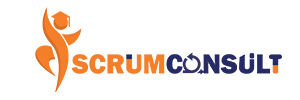Product Management and the role of a Product Owner are closely related but differ in scope, focus, and responsibilities. Here’s a breakdown of the key differences between them:
Scope and Focus:
Product Management:
- Broad Scope: Encompasses the entire lifecycle of a product from conception to retirement.
- Strategic Focus: Involves long-term planning, market analysis, product vision, and overall strategy.
- Market and Customer Orientation: Focuses on understanding market needs, customer problems, competitive landscape, and aligning the product with business goals.
- Cross-functional Interaction: Interacts with various departments including marketing, sales, finance, and customer support.
Product Owner:
- Narrow Scope: Primarily focuses on the development and delivery phase within an Agile or Scrum framework.
- Tactical Focus: Involves detailed planning, backlog management, and ensuring the development team delivers value in each sprint.
- Team Orientation: Acts as the liaison between stakeholders and the development team, ensuring the team understands and works on the highest priority items.
- Development Team Interaction: Works closely with the development team on a daily basis to clarify requirements, prioritize work, and accept completed tasks.
Key Responsibilities:
Product Management:
- Product Vision and Strategy: Defines and communicates the long-term vision and strategy for the product.
- Market Research: Conducts market research, competitive analysis, and customer interviews.
- Roadmap Planning: Develops and maintains the product roadmap, aligning it with business goals and market opportunities.
- Stakeholder Management: Engages with various stakeholders to ensure the product aligns with overall business strategy.
- Lifecycle Management: Manages the product through its entire lifecycle, including launch, growth, maturity, and decline.
Product Owner:
- Product Backlog Management: Creates, prioritizes, and maintains the product backlog.
- User Stories and Requirements: Writes detailed user stories and acceptance criteria for the development team.
- Sprint Planning and Review: Participates in sprint planning, daily stand-ups, sprint reviews, and retrospectives.
- Stakeholder Communication: Gathers feedback from stakeholders and customers to inform backlog priorities.
- Acceptance Testing: Reviews and accepts the completed work to ensure it meets the defined criteria.
Interaction and Collaboration:
Product Management:
- Higher-Level Stakeholder Interaction: Engages with senior management, marketing, sales, and other high-level stakeholders.
- Cross-Department Collaboration: Works with various departments to align the product with business strategy and market needs.
Product Owner:
- Day-to-Day Team Interaction: Works closely with the development team on a daily basis.
- Focused Stakeholder Interaction: Communicates with stakeholders to gather requirements and provide updates on development progress.
Decision-Making:
Product Management:
- Strategic Decisions: Makes high-level strategic decisions about the product’s direction, market positioning, and long-term goals.
- Investment Decisions: May be involved in decisions regarding product investment and resource allocation.
Product Owner:
- Tactical Decisions: Makes day-to-day decisions about the prioritization of work and detailed requirements.
- Sprint-Level Decisions: Determines the content and priorities for each sprint based on stakeholder input and team capacity.
Summary:
- Product Management is a broader role focused on the overall strategy, market positioning, and lifecycle of the product.
- Product Owner is a more focused role within the Agile framework, dealing with the day-to-day execution of the product development process and ensuring the development team delivers value efficiently.
Both roles are essential for the successful development and management of a product, often working closely together to ensure alignment between strategic goals and tactical execution.
To learn more about Scrum Master Certification in Lagos, Agile Expert, Project Management, Product Owner, Lean Six-sigma Green belt,

